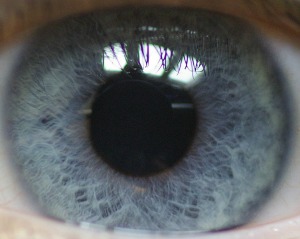A U.S. doctor who thought he was cured of Ebola learned that wasn’t entirely true after his eye turned from blue to green and he nearly went blind.
Dr. Ian Crozier contracted the disease while treating other patients in Sierra Leone back in October 2014.
After a long, draining bout with Ebola, Crozier’s medical team at Emory University Hospital declared him cured and released him.
However, in less than two months he returned to the hospital with fading sight, pain and pressure in his left eye. To make matters worse, his eye color turned from blue to green.
What doctors found was alarming---his eyeball was filled with the Ebola virus.
It was something his medical team decided to test the eye for, but didn’t expect to find at all, The New York Times reports.
It was unexpected because after his initial treatment was completed, there were no signs of Ebola in his blood; there wasn’t a trace of the disease in his tears or even on the surface of his eyeball. But inside the eye, it was a completely different story.
He was suffering from uveitis, a dangerous inflammation of the eye that threatened to make him go completely blind.
With 10,000 Ebola survivors in Sierra Leonne, Liberia, Guinea, the medical community has begun to recognize some of the same patterns in these patients post Ebola treatment. A number of West Africans have also suffered from uveitis.
During the height of the Ebola infection spreading, health workers had to prioritize those who were fatally ill over Ebola survivors suffering with secondary issues.
Now that the deadly cases of Ebola are farther and fewer between, those secondary issues have cropped up to the surface, including debilitating muscle pain, joint pain, headaches, blurred vision, fatigue and hearing loss.
Crozier was suffering from many of those symptoms, but since the Ebola in his eye posed the threat of eye loss, his medical team decided to tackle that first.
After careful consideration of how to simultaneously treat the infection and the inflammation, his eye infection was treated with steroids and anti-virals.
What Crozier’s Predicament Revealed
When Ebola outbreak cases started to hit the United States toward the end of 2014, it revealed a lack of preparation in the medical community, but also created a lot of opportunities to educate the healthcare industry and the public at large.
Much of the hoopla has since died down, but the full impact of the deadly disease continues to unfold as new scenarios provide information about Ebola’s long lasting effects.
If Ebola manages to get in the eye, it can thrive in that environment because the inside of the eye is shielded from the immune system to prevent inflammation.
Crozier’s case has stunned many medical professionals and at the very least, Emory University Hospital is calling for eye testing and monitoring for symptoms among Ebola survivors.
Other post Ebola treatment issues have been the headlines, including a man whose semen had traces of Ebola six months after recovering from the disease.
The World Health Organization responded by said Ebola survivors should practice safe sex until semen has tested negative for Ebola twice.
These incidents have shown that a patient’s blood testing negative for Ebola doesn’t automatically translate into a clean bill of health.
But more importantly, they show the need for the lines of communication to remain open between healthcare providers, researchers and the health agencies to effectively treat and protect patients from Ebola and Ebola-related complications.
LINKS
Center For Disease Control
http://www.cdc.gov/mmwr/preview/mmwrhtml/mm6417a6.htm?s_cid=mm6417a6_w
Ebola Found in Semen Six Months After Recovery
http://news.yahoo.com/ebola-virus-found-semen-six-months-recovery-104351981.html
New England Journal of Medicine:
http://www.nejm.org/doi/full/10.1056/NEJMoa1500306?query=featured_home&
New York Times:

